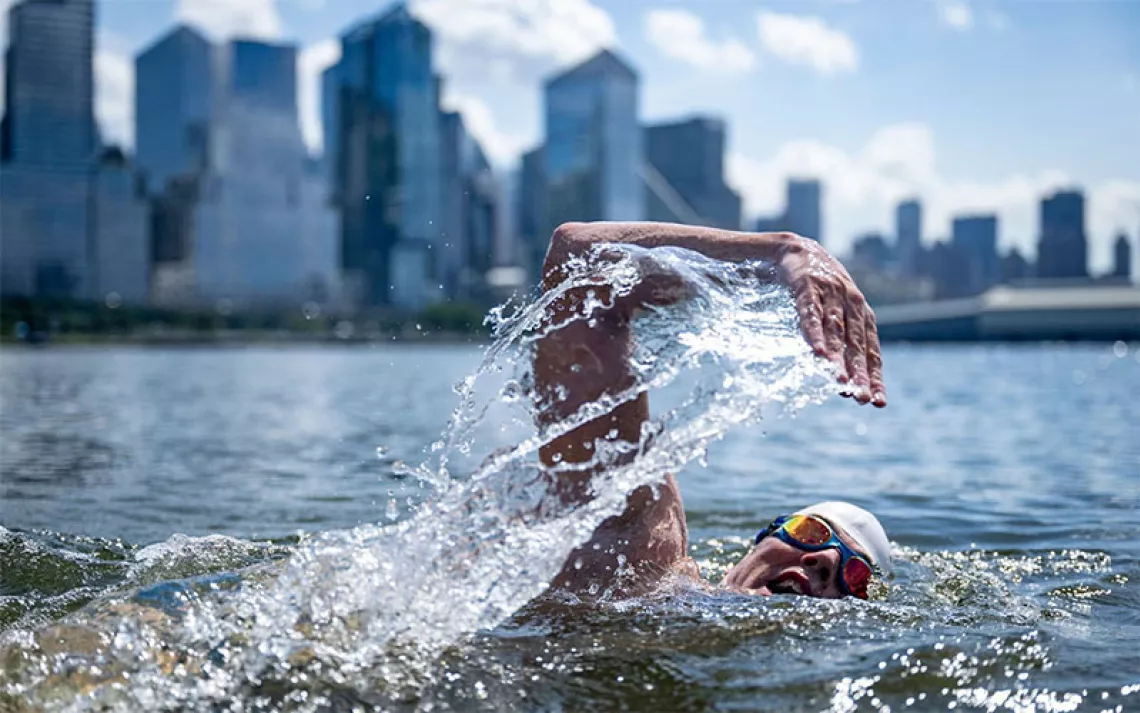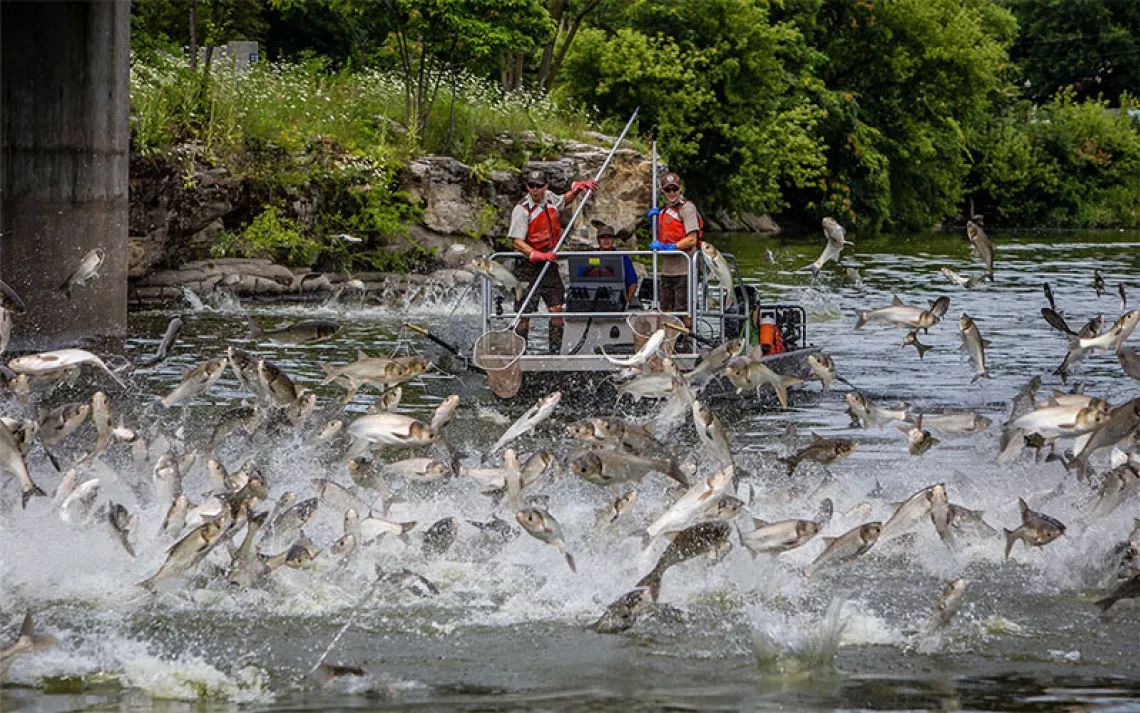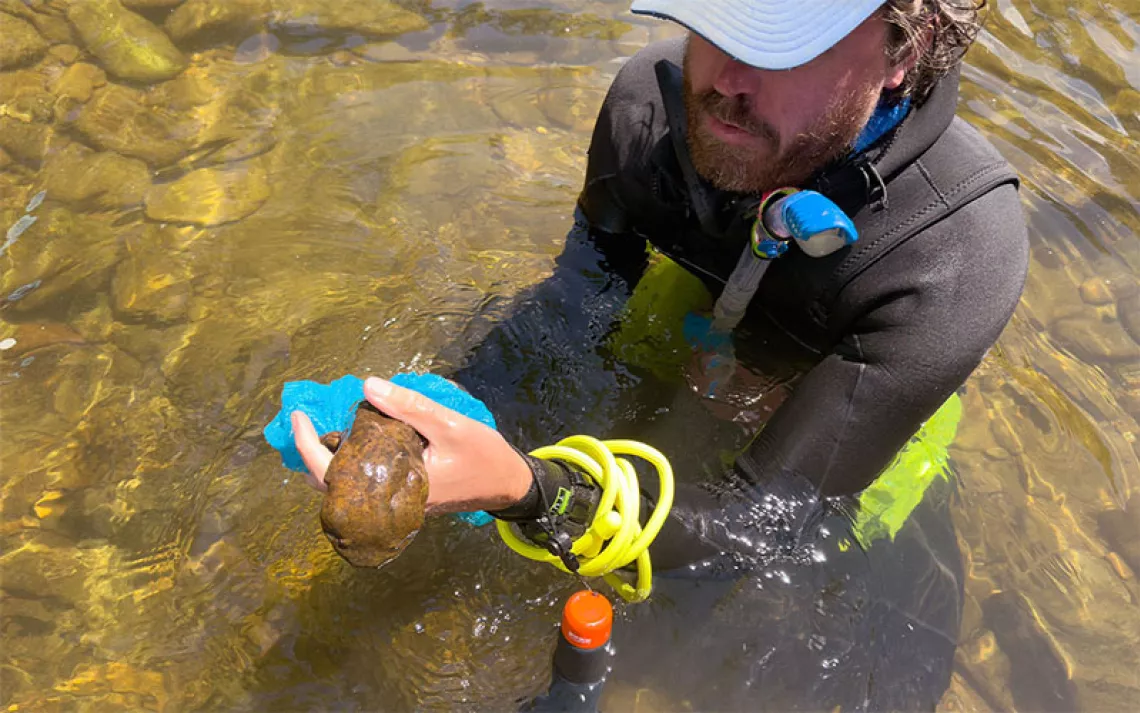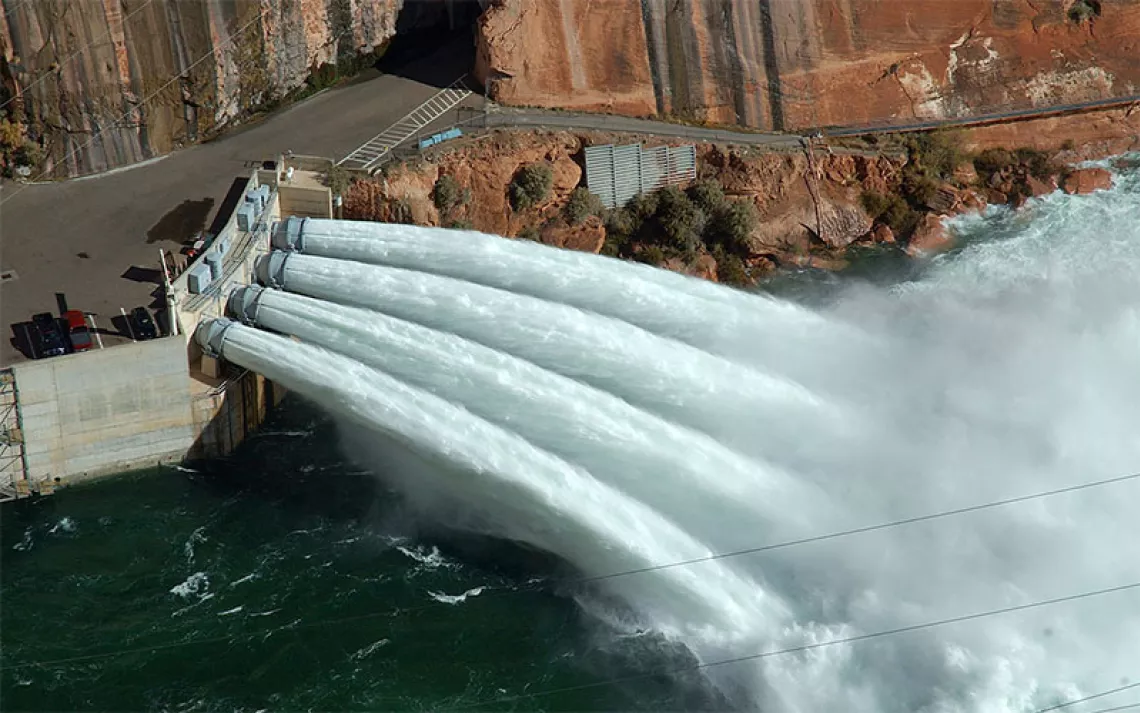India’s Yamuna River Now Enjoys Legal Personhood. Will That Be Enough to Clean It Up?
Conservationists warn that the Yamuna may already be dead

Photo and video courtesy of Pia Peterson and Thea Piltzecker
During the Hindu holiday of Holi, tons of colored dyes, some of them toxic, are released into India’s air and waterways as observant Hindus paint the town and each other. But at the Caitanya Prem Sansthan ashram in Vrindavan, a city about 80 miles southeast of New Delhi, celebrants use only natural, nontoxic pigments and spices like turmeric and flowers for the celebration. The head of the local ashram, Srivatsa Goswami, insists on it.
Goswami is struggling to save the Yamuna River, which flows just outside of his ashram. “We are fighting for the life of the Yamuna, because the Yamuna is our life,” Goswami says. His son Suvarna adds, “We don’t call it the Yamuna right now. This dirty water, this is not the Yamuna. This is sewage water.”
While the Indian government has launched various efforts, past and present, to try to clean up the iconic (and heavily polluted) Ganges River, much less attention has been paid to the Yamuna, a Ganges tributary that begins at a glacier in the Himalayas and runs for 855 miles through northern India. At some of its middle sections—especially the portions that run through Delhi—the river is effectively “dead,” according to scientists, choked of oxygen because of the water’s concentrated pollution.
The Yamuna’s miserable condition is due to a combination of factors. Hindu religious ceremonies—big festivals like Holi and everyday rituals such as funerals—are one factor, though Goswami says they get a bad rap for polluting the river. It’s true that many rituals involve using the river for purification purposes. In the case of funerals, bodies are burned in riverbank pyres and the ashes are swept into the water; in certain instances, the bodies themselves are disposed of in the river. But these practices, prevalent though they are, make just small contributions to the overall pollution and state of the river.
The main polluters of the Yamuna, Goswami says, are secular: the sewage that flows from New Delhi and the cities along its banks; chemical waste from manufacturing; pesticide runoff; and the detritus from riverbank housing. “Krishna cleans the Yamuna, but we have a responsibility also,” Goswami says. “More than religion, it’s the politicians, the economic community that have shifted their attention away—and the catastrophe is Vrindavan."
The municipal government in Vrindravan has launched some efforts to clean up the river, but they have stalled due to lack of interest and involvement from the local community. Concrete sewage pipes remain piled at the water’s edge—dozens upon dozens of lengths of pipe tall enough for a small person to walk through. In town, a public urinal on a quiet street empties into a runoff channel, where it mixes with rainwater, dung, and oil. The channel winds downhill, directly into the Yamuna, where it mingles with trash along the muddy riverbank.
Even as the pollution persists, the river has recently received new protections in the Indian legal system. In March, the Uttarakhand state government granted the Yamuna and the Ganges Rivers legal personhood, giving them the same rights as a human citizen in India. This means that any harmful actions toward the river can be considered “equivalent to harming a person.”
“It’s an interesting turn in Indian law,” says Jack Hawley, professor of religion at Barnard College. For many, this legal ruling corroborates a general sense of “the liveliness of the river, that she has a personality that relates to other personalities.”
While the granting of legal personhood to a river is, in a way, historic, for now at least the designation means very little to the state of the river. Nor has it changed the daily reality for the people who depend on the river for their drinking water, jobs, or religious practice. Mornings at the riverbank are crowded affairs; people come to the water to wash, pray, or travel on one of the painted rowboats punting along the shore. Also, the personhood designation came from the state government, not India’s federal government, so its potential benefit is limited. It will be difficult, if not impossible, to coordinate efforts with other states that have not officially recognized the river’s new rights. And despite a legal ruling that drew heavily on the Yamuna’s sacred meaning and continued religious usage, religious leaders are not included in the planned Upper Yamuna Board. Instead, the three groups in charge of advocating on the river’s behalf are the head of the Ganges Clean-up Program, the chief secretary of the state of Uttarkhand, and a member of the state’s highest court. Nongovernmental environmental advocacy groups, too, are noticeably absent from the management board.
Dr. Syamel Sarkar of Delhi’s Energy and Resources Institute points out that the government, while it takes actions “on the surface,” cannot fix the river pollution problem without reaching across borders and working with other municipalities and the federal government to affect change. Sarkar warns that “as a stakeholder, the government cannot deliver results alone,” and needs to work with religious leaders, private companies, and across party lines.
Despite Prime Minister Narendra Modi trumpeting his efforts with the Ganga Action Plan, the river remains dangerously polluted for many who rely on it for daily life and religious rituals, according to Goswami. Hundreds of millions of dollars have been spent over the last few decades, and India is still no closer to a solution for the Ganges and its tributaries. The Yamuna Action Plan was launched in 1993, and the Indian government has spent millions of rupees since then trying to revive the “dead” river without any improvement in water quality, Sarkar says.
Vrindavan is downstream from New Delhi, one of the most populated cities in the world, and one that lacks the infrastructure to provide for all of the city’s estimated 22 million people. This is especially a problem when it comes to sewage disposal. Dr. Sarkar says the city’s sewage treatment capacity currently hovers at about 50 percent. An estimated third of the population of Delhi lives in illegal settlements that aren’t connected to the sewage system or properly counted in census data. The riverbank slum-dwellers further complicate waste management: How can a government implement effective resource management if it isn’t quite sure how many people need those resources? Ultimately, both treated and untreated sewage flow straight to the Yamuna and on to Vrindavan.
Freshwater upstream is diverted to farmland; before the river reaches the cities, more is directed to the drinking supply. High pollution and low water supply means that the river itself has a rate of toxicity far above the average. Safe bathing water should have a count of no more than 5,000 fecal bacteria per 100 milliliters; as of the latest tally, the Yamuna has 1.1 billion fecal bacteria per 100 milliliters.
By the time the Yamuna reaches Vrindravan, the river’s flow is essentially concentrated wastewater from Delhi. Sarkar says that groundwater depletion from wells along the way concentrate the pollution in the remaining groundwater, which is linked to the river. As a result, 22 miles of the Yamuna, from Delhi to Agra (including the section of the river that flows through Vrindravan) have recently been declared unfit for swimming or bathing.
While politicians struggle to turn campaign promises into effective positive changes for the river, Hindu religious leaders like Goswami must work in their own communities to affect smaller changes, such as using ecofriendly dyes or organizing cleanups of a popular temple in town to encourage Indians to take responsibility for their trash. It will still take a massive effort and commitment on behalf of all Indians to make the river as it once was, and safe for all people to drink and bathe in. “This dirty water is not the Yamuna,” Goswami says. “If we accept this dirty water body as Yamuna, we are doing it an injustice.”
 The Magazine of The Sierra Club
The Magazine of The Sierra Club



